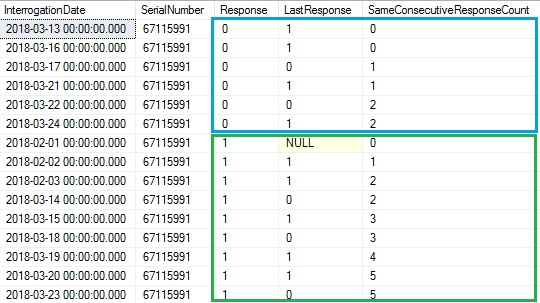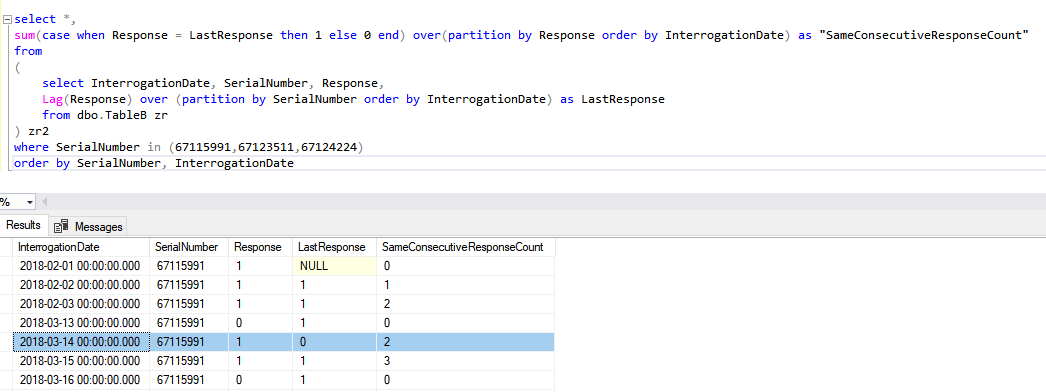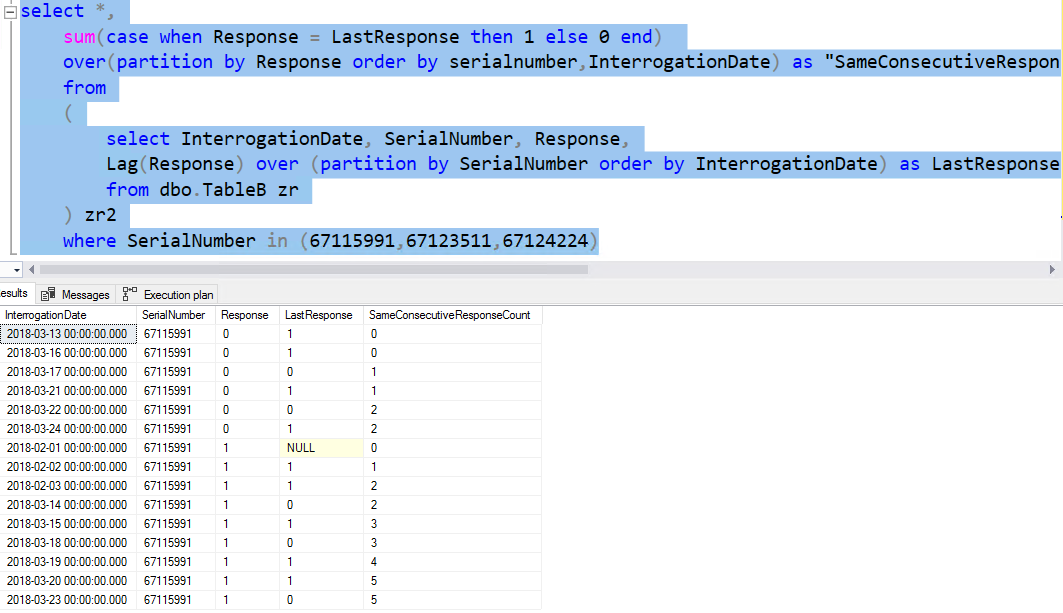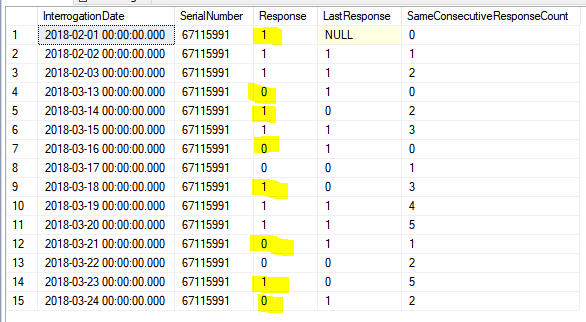To start somewhere: You should download and install CU14 which is the most recent Cumulative Update of SQL 2019 to get access to many bug fixes and improvements.
As for your question 2): The 2 is the same as the 2 just above. You are saying:
sum(case when Response = LastResponse then 1 else 0 end) over(partition by Response order by InterrogationDate)
At this point Response is 1 and LastResponse is 0, so the CASE expression returns 0 and adds nothing to the sum. So the 2, which is in the same partition group is left unchanged.
As for what happens in 3) I'm not sure that I want to go into. Your LAG has one PARTITION clause and the SUM has another, and, well, it obviously does not end well.
As for your actual problem, this one of these problems that are difficult to implement efficiently with a pure set-based solution. It's obvious that it can be done as a single pass over the data, but there is no way to express that efficiently. So, yes, it will have to be a loop. However, it does not have to be a loop one row at a time, but you can loop abreast. That is, I assume that you want this numbering for an individual SerialNumber, so you can handle multiple SerialNumber in parallel. With that brutal amount of data, you should probably take a couple at a time.
To give you some inspiration you can watch my lightning talk Looping Abreast.








